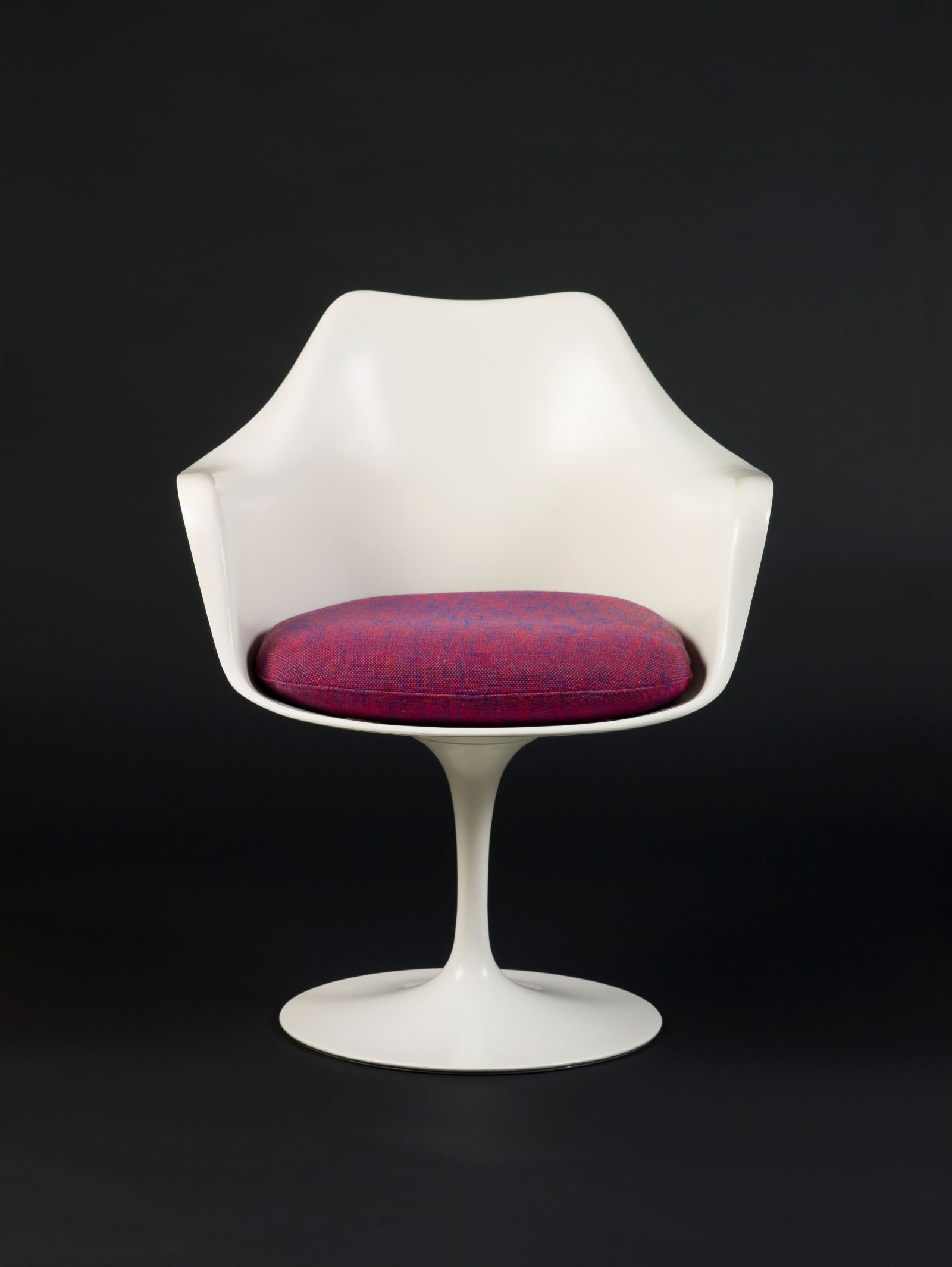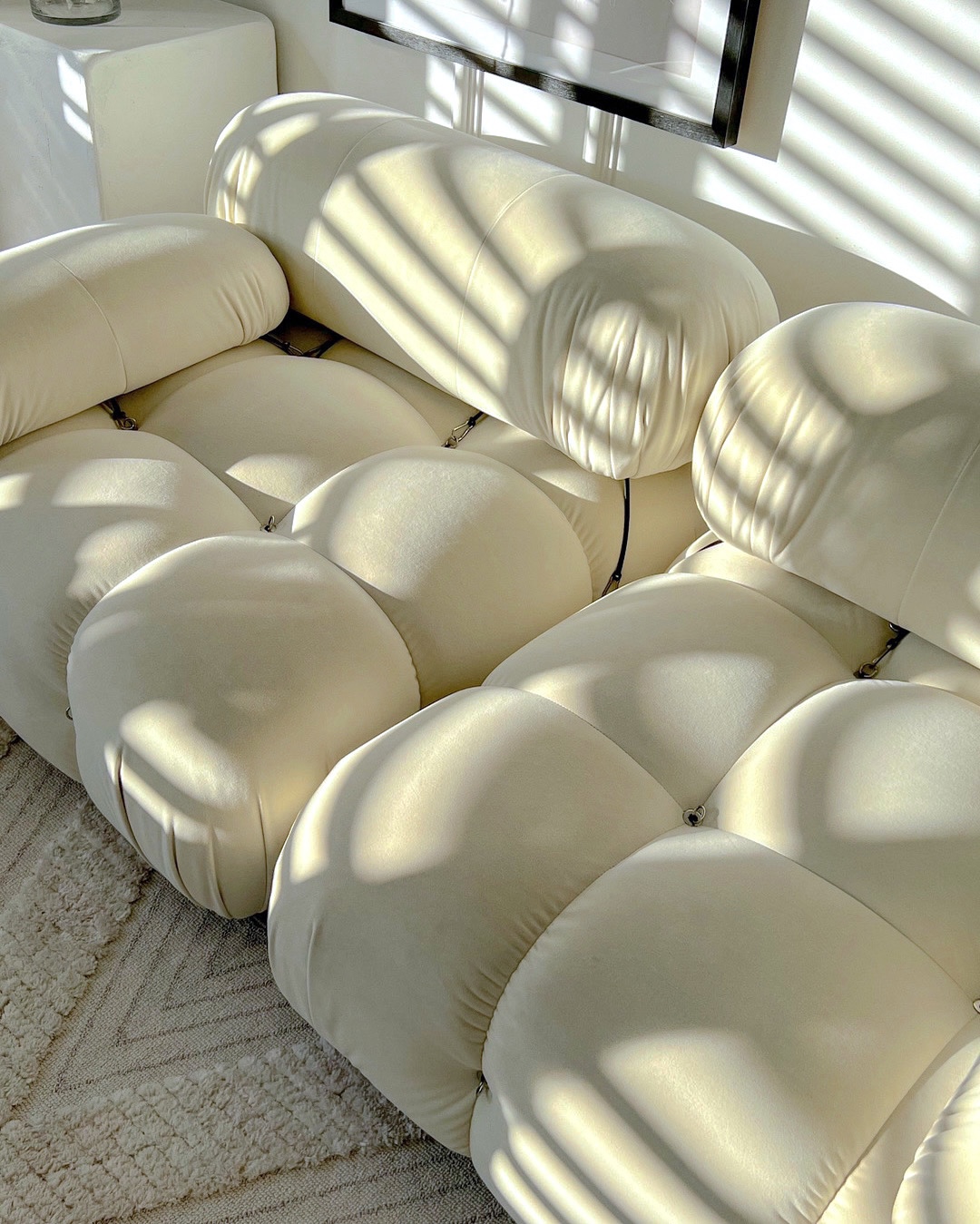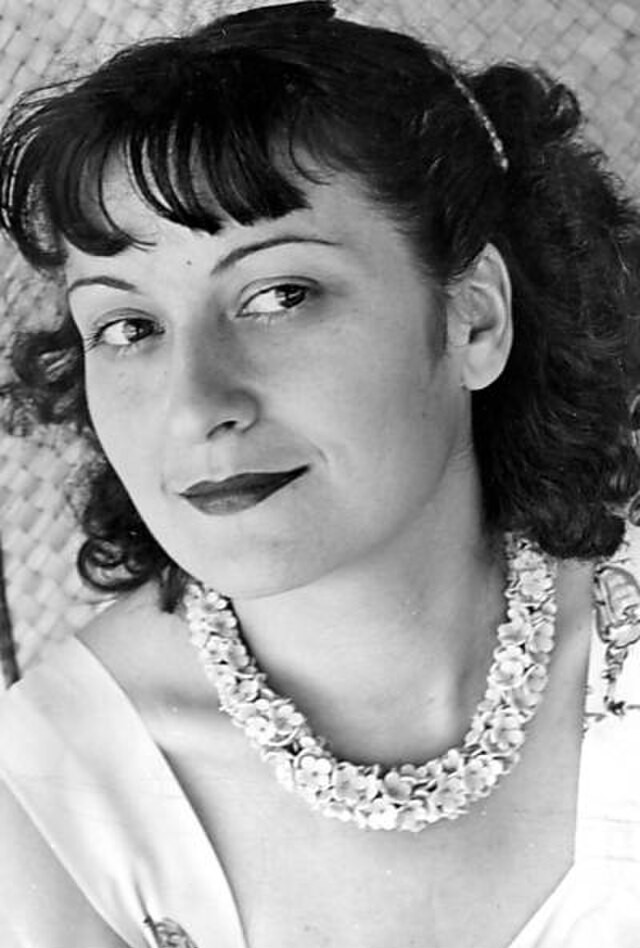
Florence Knoll’s Vision – Eero Saarinen’s Iconic Tulip Chair for Knoll Associates.
Photo by Unknown, via Saint Louis Art Museum (Public Domain).
The annals of 20th-century design are replete with figures whose singular visions reshaped our built environment. Yet, few possess the transformative power and quiet authority of Florence Knoll. More than a designer, an architect, or an entrepreneur, Knoll was a force of nature who, with a systematic approach and an unwavering commitment to elegant functionality, did not merely furnish spaces; she fundamentally re-architected the very concept of the contemporary workspace. Her legacy is a testament to the profound impact of thoughtful design, a meticulously orchestrated symphony of form and purpose that continues to resonate in the modern office.
The Genesis of a Visionary: Florence Knoll’s Formative Years
The remarkable trajectory of Florence Knoll, born Florence Marguerite Schust on May 24, 1917, in Saginaw, Michigan, began amidst circumstances that, for many, might have proved insurmountable. Orphaned by the tender age of twelve, her early life was marked by a vulnerability that, serendipitously, led her into the nurturing embrace of the Cranbrook Educational Community. This hallowed ground, designed by the eminent Finnish architect Eliel Saarinen, became more than a boarding school; it was a formative environment where her innate interest in architecture, perhaps first stirred by the blueprints on her father’s desk, was meticulously cultivated.
Within Cranbrook’s hallowed halls, a constellation of visionary mentors recognised her prodigious talent. Rachel de Wolfe Raseman, the art director at Kingswood School for Girls and one of only two hundred practising female architects in the United States at the time, became her first guide, ushering her into the foundational principles of architecture and drafting. This early encouragement saw Florence designing her first house concept at just fourteen years old. The Saarinen family, in particular, extended an extraordinary embrace, virtually adopting Florence. Summers spent in Finland with Eliel and his son, Eero Saarinen—who would become a lifelong friend and pivotal collaborator—provided impromptu architectural history lessons and an immersive experience in the world of design. This intimate, early exposure to the vanguard of modern architecture and design, coupled with her resilience in pursuing her education despite fragile health and the tumultuous outbreak of World War II, which compelled her return to the United States, laid a unique foundation. It was not merely the knowledge she acquired, but the meaningful personal connections and the supportive intellectual community that fostered her distinctive perspective, empowering her to later challenge established norms with an unshakeable conviction. This crucial early mentorship, rather than a traditional familial structure, provided the intellectual and emotional scaffolding that allowed her to transcend personal adversity and emerge as a truly revolutionary figure in design.
Knoll’s intellectual lineage is undeniably rooted in the Bauhaus, a German art school that championed the fusion of art, design, and industry. Her formal education continued across continents, encompassing studies at Cranbrook Academy of Art, Columbia University (where she delved into town planning), and the Architectural Association in London. However, it was her direct engagement with the Bauhaus masters, who had sought refuge in the United States from the rising political tensions in Europe, that powerfully shaped her philosophy. She apprenticed briefly with Walter Gropius and Marcel Breuer in Cambridge, Massachusetts, and later studied directly under Mies van der Rohe at the Illinois Institute of Technology (IIT), who would become her most influential instructor.
From these titans of modernism, she absorbed the core tenets of the Bauhaus movement and the International Style: simplicity, clarity, and the elimination of superfluous elements. Crucially, she embraced the firm belief in “Total Design”—a concept that transcended the mere creation of individual objects to encompass the orchestration of a “total architecture,” where every element, from the building’s structure to its interiors and furnishings, was conceived as a cohesive, integrated whole. Mies van der Rohe’s iconic “less-is-more” philosophy and his rigorous emphasis on material integrity greatly influenced her own clarified designs with their rigorous geometries. Eliel Saarinen’s teaching that furniture should complement architecture, rather than compete with it, further cemented her holistic vision. This multidisciplinary approach, which viewed design thinking as a unified whole rather than segmented categories, became the bedrock of her entire professional life. Florence Knoll thus emerged as a crucial conduit, translating the theoretical rigour and aesthetic purity of European modernism, as imparted by its exiled masters, into a practical, commercially viable application for the burgeoning post-war American economy. Her “Total Design” was not simply an academic concept; it became a highly effective business model that “humanised modernism” by integrating colour, texture, and organic forms, making high design accessible, comfortable, and functional for a broader market, rather than solely an elite one. This unique synthesis of abstract European ideals and the concrete demands of American industry allowed her to bridge the gap between avant-garde theory and widespread utility, defining an era and shaping American identity.
Forging an Empire: The Birth of Knoll Associates and the Planning Unit
Upon settling in New York in 1941, Florence Schust encountered Hans Knoll, an aspiring furniture businessman who had established the Hans G. Knoll Furniture Company in 1938. Hans, with remarkable foresight, recognised her extensive design experience, extensive knowledge, and invaluable architectural connections, eagerly bringing her into his fold. This meeting marked the genesis of a partnership that would redefine modern design.
In 1943, Florence officially joined the company and, at the remarkably young age of 26, launched its groundbreaking interior design department: The Knoll Planning Unit. Three years later, in 1946, Florence and Hans married, and she became a full business partner in the rechristened Knoll Associates, Inc., solidifying their professional and personal bond. Their union was a formidable synergy that propelled the company to international prominence. Hans was the charismatic salesman, the entrepreneurial engine adept at commercial expansion, opening factories and showrooms worldwide. Florence, conversely, was the discerning arbiter of taste, the visionary design director, and the intellectual compass, meticulously controlling every aspect of the design output, from letterhead to the precise radius of a furniture piece. Together, they transformed a modest furniture business into an immensely influential international trendsetter, with annual business reaching $15 million by 1960 and showrooms expanding globally.
The Knoll Planning Unit (KPU), which Florence directed with an exacting eye until her retirement in 1965, was unequivocally the engine of Knoll’s corporate success and aesthetic achievement. Despite its monumental impact, it was never a sprawling department, typically staffed with a lean team of only six to eight designers, even for massive corporate projects like Connecticut General. The KPU’s mission was to “create the visual language of the modern office interior and to make it inhabitable”.
Florence Knoll’s most pivotal contribution was her radical redefinition of interior design. She vehemently asserted, “I am not a decorator. The only place I decorate is my own house”. This statement was not merely a personal preference but a declaration against the gendered stereotypes that relegated interior design to a mere “female hobby”. She elevated the field from “interior decoration” to “spatial architecture,” a domain predominantly male in the 1950s. Her approach, rooted in her architectural training, was rigorous and systematic. The Planning Unit meticulously researched and surveyed each client’s needs, patterns of use, and company hierarchy, presenting comprehensive designs informed by modernist principles and executed in Knoll’s signature style. This involved a thorough analysis of work requirements, moving beyond mere aesthetics to create functional spaces tailored to specific needs.
A central tool in their design process was the “paste-up” – a revolutionary client presentation method that involved boards displaying the space’s plan with actual fabric swatches, wood chips, and other material samples. This tactile approach conveyed the experience of a space more accurately than a drawing, highlighting colours, materials, and finishes to reinforce a “humanised modern ideal of a tactile, visually stimulating environment”. This innovation not only changed professional communication but also influenced the aesthetic of interiors. The “Knoll Look” emerged—a clean, uncluttered aesthetic characterised by sleek lines, minimalist furniture, and a strategic use of neutral palettes accented with vibrant colours and textures. This identifiable style became synonymous with modern office design and came to symbolise American interior design in the 1950s and 60s. The rigorous application of architectural principles to interiors, coupled with a thorough understanding of human behaviour and space utilisation, allowed Knoll to establish new standards and ethics in the profession, many of which remain operative today. This systematic approach, applied across all visual design aspects—furniture, textiles, and graphics—was a direct consequence of her Bauhaus training and her “Total Design” philosophy.
The Architect of the Modern Office: Transforming Corporate Workspaces
Florence Knoll’s most significant impact lies in her radical transformation of the corporate office. She pioneered the concept of “open-plan workstations,” a revolutionary departure from the cluttered, inefficient layouts of the past. These flexible, light-filled spaces liberated secretaries from “dark, interior office cells” and provided clients with unprecedented adaptability. Her architectural background enabled her to see office spaces as integrated systems, prioritising user experience and productivity over mere aesthetics. This perspective allowed her to shift design from static decoration to dynamic, human-centric environments.
Knoll meticulously redesigned traditional office furniture, which often consisted of heavy, carved mahogany desks placed diagonally in a corner, with a cluttered table behind them. Her solution was to replace these with light, sleek modern designs, straightening their diagonal positioning—a change she initially found to be her “biggest obstacle” with clients. She conceived of a desk that could double as a conference table, freeing up space for collaboration, and introduced the highly functional credenza for ample, concealed storage, eliminating the unsightly clutter of traditional setups. Conference tables were reimagined into boat-shapes, facilitating better sightlines and communication during group discussions. Her designs brought in architecture, ergonomics, efficiency, and space planning, creating a comprehensive approach to interiors.
The Knoll Planning Unit’s influence was cemented through a series of landmark corporate projects that served as powerful case studies in modern office transformation. These commissions were not merely design tasks; they were strategic showcases that established industry standards and cemented the “Knoll Look” as the symbol of modern corporate interiors.
One of the most important breakthroughs for the Planning Unit came from its work for CBS president Frank Stanton. Impressed by the innovative designs showcased in Knoll’s showrooms, Stanton became a vocal advocate, promoting Knoll’s design services to his contacts. Florence Knoll shrewdly publicised their work for CBS through architecture and design magazines, effectively leveraging these high-profile projects as marketing tools. For the new CBS headquarters in New York City, a black-clad skyscraper designed by her friend Eero Saarinen, Florence Knoll’s involvement was comprehensive. Her role “embraced everything from the choice of wall coverings – sometimes felt or tweed for the sake of acoustics – to ashtrays, pictures and door handles”. She demonstrated that “texture in fabrics can be as interesting as a print (she dislikes prints) and that steel legs on tables, chairs and sofas can have grace and elegance”. The interiors featured open-plan offices, reception areas, and executive offices, all designed in keeping with her modernist style, focusing on clean lines and clear geometries.
Another monumental project was the General Motors Technical Centre in Warren, Michigan, a twenty-five-building complex designed by Eero Saarinen. This was considered the largest and most influential corporate complex of its time, requiring furnishings for 5,000 people. Florence Knoll, leading the Planning Unit, played a crucial role in this large-scale undertaking. Saarinen specified thousands of the Model 71 and 72 chairs, which became a staple in the GM cafeteria alongside a vast metal sculpture by Harry Bertoia. Florence herself recalled this as “the first real event in using one of Eero’s designs in a big commercial establishment”. This project spurred Knoll to experiment with synthetic fibres in textiles, further advancing material innovation.
The Connecticut General Life Insurance Company Headquarters in Bloomfield was another prime opportunity for Knoll to showcase the Planning Unit’s fundamental design principles. Recommended by Gordon Bunshaft of Skidmore, Owings & Merrill, this project allowed Knoll to demonstrate her analysis of design needs in terms of actual office behaviour and the reorganisation of the spatial environment to align with reality. The calming tenor of the final interior, which included custom-built credenzas and woven wall screens, was the result of a painstaking design process.
Beyond these, the Knoll Planning Unit completed over 70 office interiors for major American companies, including IBM, Look magazine, Seagram, Heinz, and the Rockefeller family offices. Paul Goldberger, a critic for The New York Times, famously stated that Florence Knoll “probably did more than any other single figure to create the modern, sleek, postwar American office, including contemporary furniture and a sense of open planning into the work environment”. This comprehensive approach, combined with strategic promotion and skilled staff, turned corporate humanised modernism into a ubiquitous reality.
A Curatorial Eye and Enduring Legacy: Shaping the Knoll Collection
Florence Knoll’s genius extended beyond her own designs; she possessed an unparalleled curatorial eye, transforming Knoll Associates into a veritable pantheon of modernist talent. She leveraged her extensive network of friends and former mentors from Cranbrook and the Bauhaus to bring iconic designs to production, fundamentally shaping the Knoll collection. This included securing exclusive rights to produce furniture by Ludwig Mies van der Rohe, such as the Barcelona Chair and Brno Chair. She also brought in her Cranbrook associates like Eero Saarinen, whose Womb Chair (designed at her specific request for a chair “like a great big basket of pillows that I can curl up in”), Tulip series, and Model 71/72 chairs became signature pieces. Harry Bertoia’s distinctive wire chairs, a result of Knoll giving him two years to explore how his metalwork could be translated into furniture, also became a cornerstone of the collection. Other notable designers she brought into the fold included Isamu Noguchi (Cyclone Table), Marcel Breuer (Wassily, Cesca chairs), Jens Risom, George Nakashima, Richard Schultz, and Warren Platner.
Florence Knoll was a champion of designers, ensuring they received proper credit and royalties for their work, a practice that attracted a considerable pool of talent to Knoll. Her curatorial vision was not merely about acquiring existing masterpieces; she actively identified gaps in the corporate furniture market and commissioned pieces to fill those needs. This symbiotic relationship between Knoll’s own designs and her curatorial vision meant that her practical, essential pieces complemented the “stars” she brought in, creating a cohesive, comprehensive collection that addressed every aspect of a modern interior.
While often denying the status of a “furniture designer,” Florence Knoll’s own contributions to the Knoll catalogue were substantial and impactful. She referred to her designs as “fill-in pieces that no one else was doing” or the essential “meat and potatoes” necessary for a complete space. By 1950, over a third of Knoll Associates’ 63 products were her designs. These pieces, including her Lounge Collection (1954), desks, credenzas, coffee tables, and benches, are characterised by their architectural quality, clean lines, and rigorous geometric profiles, directly reflecting the Bauhaus tenets of rational design she learned from Mies van der Rohe.
Her Lounge Collection, for instance, is a scaled-down translation of the rhythm and proportions of mid-century modern architecture, warmed through colour and texture. These designs, initially conceived as functional solutions for executive offices and reception areas, transcended their original purpose, becoming timeless classics equally at home in residential settings. The Florence Knoll Sofa, with its “trim little tufted sofa with its polished-chrome base and elegant proportions,” was praised by Vogue for its transcendence from a “midtown-Manhattan bank president’s office” to “high-profile” residential settings. Her executive desk, with its Brazilian rosewood top and chromed-steel X-base, was designed to “facilitate communication” and provide a grand yet minimal surface. Her credenzas, like the 1961 design, offered ample concealed storage, addressing a common office problem with sleek functionality and material elegance, often featuring marble, lacquer, or stained oak. This emphasis on material integrity—using granite, glass, marble, and leather—provided subtle ornamentation, reflecting her belief that materials themselves could provide sufficient aesthetic interest. The timelessness of functional beauty in her designs, rooted in architectural principles and human needs, allowed them to transcend fleeting trends and remain relevant for decades.
Florence Knoll’s continuing impact on design and culture is immeasurable. She not only revolutionised the American corporate office but also professionalised the interior design field, establishing a new profession and setting new standards and ethics. Her “Total Design” philosophy, which integrated architecture, furniture, textiles, graphics, and spatial planning, continues to guide contemporary workplace principles, emphasising human-centred, flexible, and integrated environments. Her pioneering work anticipated many modern workplace design principles, such as the importance of natural light, flexible spaces, and technology integration.
Her contributions were widely recognised throughout her lifetime. She was the first woman to receive the Gold Medal for Industrial Design from the American Institute of Architects in 1961, and in 2002, she was presented with the National Medal of Arts, the nation’s highest honour for artistic excellence. Her induction into the Interior Design Magazine Hall of Fame in 1985 further cemented her status. The continued success of the Knoll Company today, and the ongoing relevance of her designs, stand as a testament to her remarkable aesthetic vision and business acumen. The continued influence of her holistic, human-centred approach ensures that her foundational principles continue to shape how we live and work.
Knoll’s Influence in Australia
While Florence Knoll’s primary impact was felt across American corporate landscapes, her innovative approach to office design and the furniture she curated also found resonance in Australia. Today, Knoll furniture is readily available through authorised distributors like DeDeCe, WorkArena, and Editeur, who bring Knoll’s iconic designs to both residential and commercial projects across the country. DeDeCe, in particular, has long prided itself on providing “style leadership” and promoting the best in product design within Australia’s architecture and design community, ensuring that Knoll’s legacy of functional beauty continues to shape local interiors. During the mid-20th century, as Australian architecture embraced modernist principles, there was a noticeable parallel in corporate design, with firms adopting highly rational, geometric styles in sleek glass and metal constructions, akin to the American corporate architecture shaped by Mies van der Rohe and his followers—key mentors and collaborators of Knoll. This broader adoption of the International Style and its emphasis on clean lines, efficiency, and integrated design meant that the principles Florence Knoll championed for American workplaces indirectly influenced and found a receptive audience in Australia, contributing to a modern aesthetic in local office and residential spaces that persists to this day.
A Foundational Influence: Knoll’s Lasting Impact
Florence Knoll’s journey, from an orphaned child to the architect of the modern office, is a compelling narrative of vision, resilience, and significant influence. She was not merely a designer of furniture but a choreographer of space, a strategist who understood that “good design is good business”. Through the revolutionary Knoll Planning Unit, she systematically dismantled outdated notions of office aesthetics, replacing them with a “humanised modernism” that prioritised functionality, efficiency, and the well-being of the occupant. Her “Total Design” philosophy, born from the rigorous teachings of the Bauhaus and Cranbrook, seamlessly integrated architecture, interiors, and furnishings into a cohesive, elegant whole.
Knoll’s legacy is multifaceted: she professionalised interior design, established foundational standards for corporate environments, and curated a collection of modernist masterpieces while creating her own timeless “fill-in” pieces. The sleek lines, rationalised space plans, and thoughtful integration of colour and texture that define the “Knoll Look” continue to inform contemporary design, proving that true functional beauty transcends fleeting trends. Florence Knoll did not just design offices; she designed a better way to work, leaving an indelible mark on the landscape of human endeavour.
Further Reading
Araujo, Ana. No Compromise: The Work of Florence Knoll. Birkhäuser, 2021.
Kaufmann-Buhler, Jennifer. Open Plan: A Design History of the American Office. Bloomsbury Visual Arts, 2021.
Volker, Angela. KnollTextiles: 1945-2010. Yale University Press, 2011.
Marilyn, Finkel. Florence Knoll Bassett: The Architect of the Modern Office. Rizzoli, 2024.
Fitzgerald, Oscar. American Furniture Designers: 1900-2020. Rowman & Littlefield Publishers, 2022.



